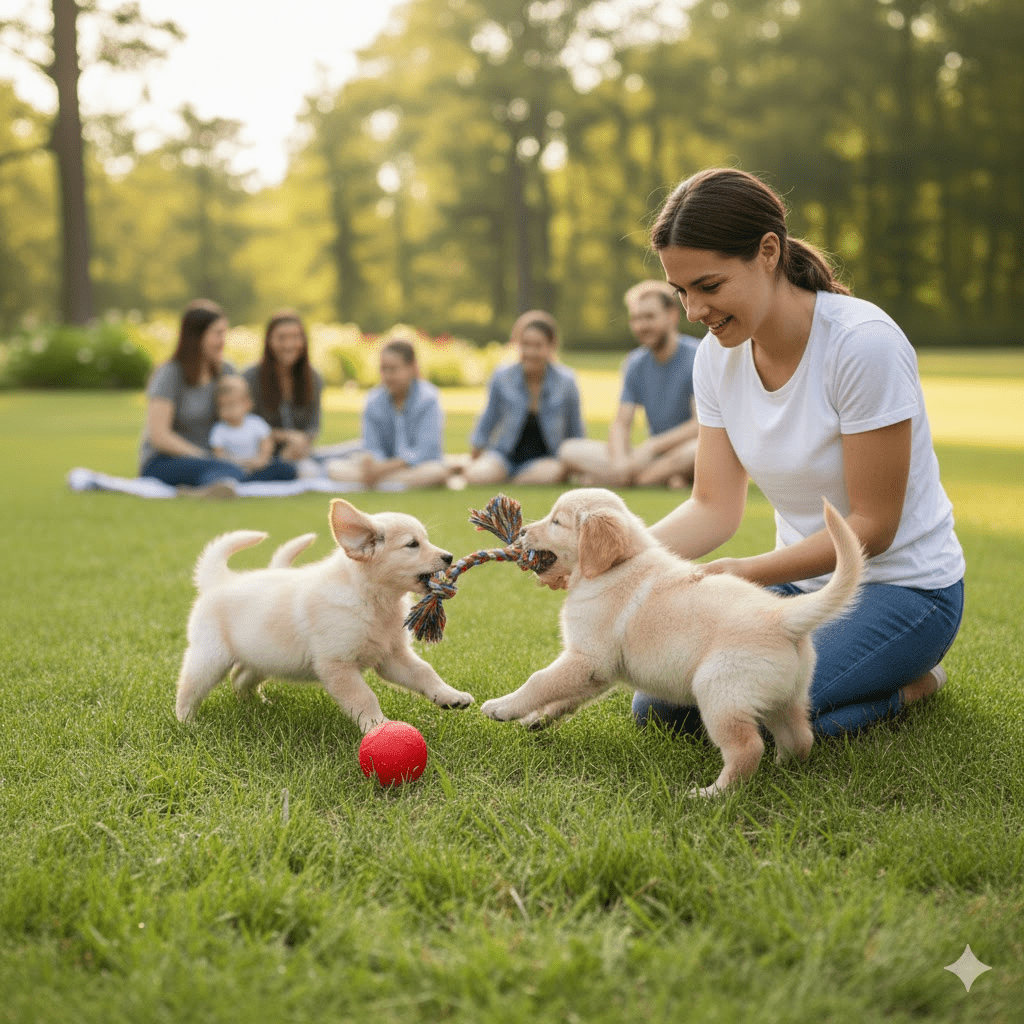The image above perfectly encapsulates the pure joy and playful spirit of a Golden Retriever puppy. With paws enthusiastically reaching out, a soft gaze, and a lush, golden coat, this little one is a prime example of why Golden Retrievers consistently rank among the most beloved dog breeds worldwide. Their innate friendliness, intelligence, and gentle nature make them exceptional companions for individuals and families alike. From their earliest days, these puppies exhibit a unique blend of curiosity and affection, eager to explore their surroundings and form strong bonds with their human caregivers. This article delves into the captivating world of Golden Retriever puppies, exploring their developmental milestones, essential care requirements, and the unique characteristics that make them such cherished members of any household. Understanding these aspects is crucial for anyone considering bringing one of these delightful creatures into their home, ensuring a healthy, happy, and well-adjusted life for both puppy and owner. The journey of a Golden Retriever puppy is filled with rapid growth, learning, and an abundance of unconditional love, making every moment with them a truly rewarding experience.
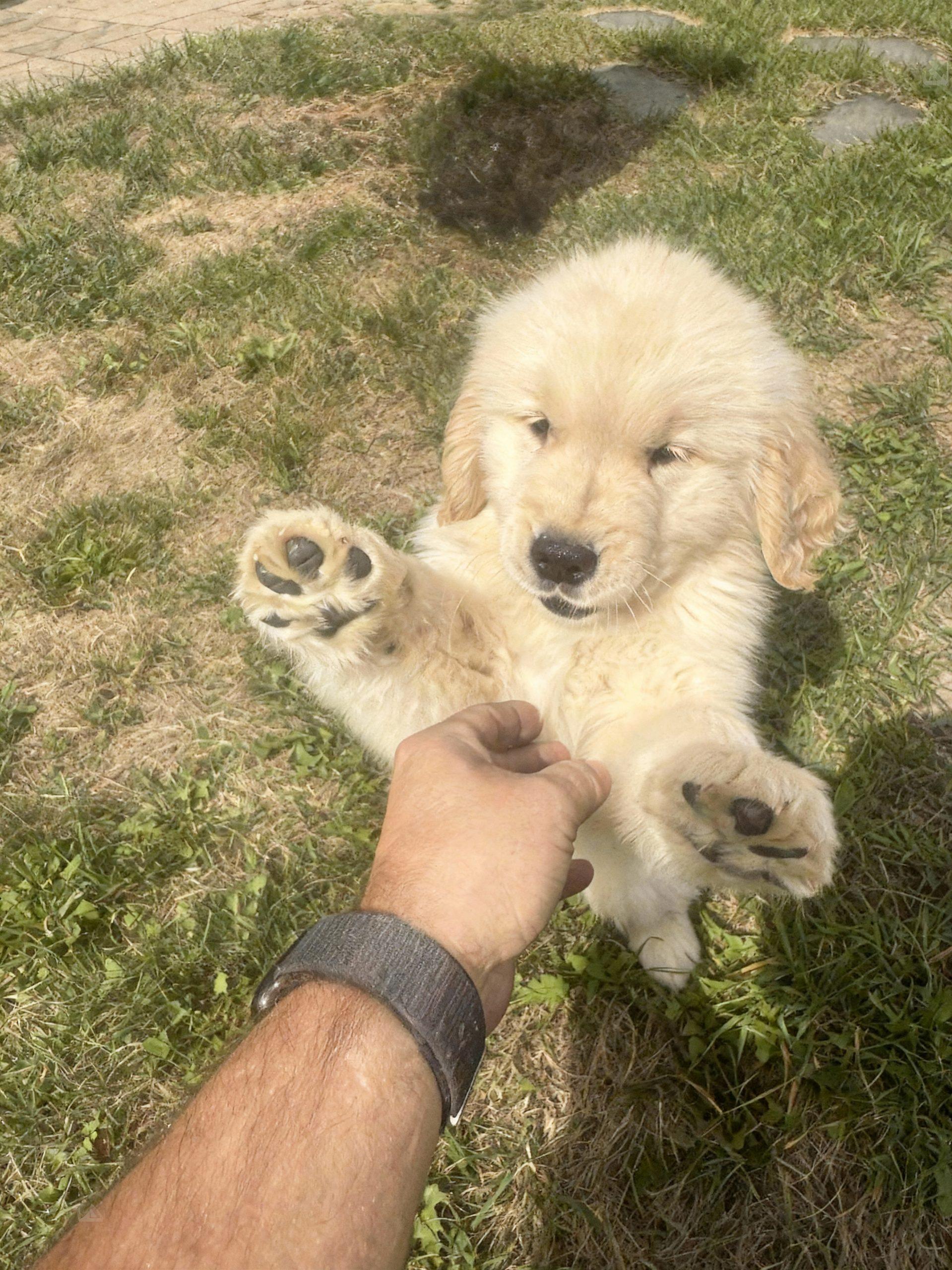
Developmental Stages: From Newborn to Playful Pup
Golden Retriever puppies undergo significant changes in their first few months of life. Newborns are entirely dependent on their mother, blind and deaf, relying solely on scent and touch. By two to three weeks, their eyes and ears open, and they begin to explore their immediate surroundings, albeit clumsily. The critical socialization period typically occurs between 3 and 16 weeks. During this time, puppies learn bite inhibition, canine communication, and how to interact with littermates and humans. Early positive exposure to various sights, sounds, people, and other friendly animals is crucial for developing a well-adjusted and confident adult dog. This foundational period shapes their future temperament and ability to adapt to new situations.
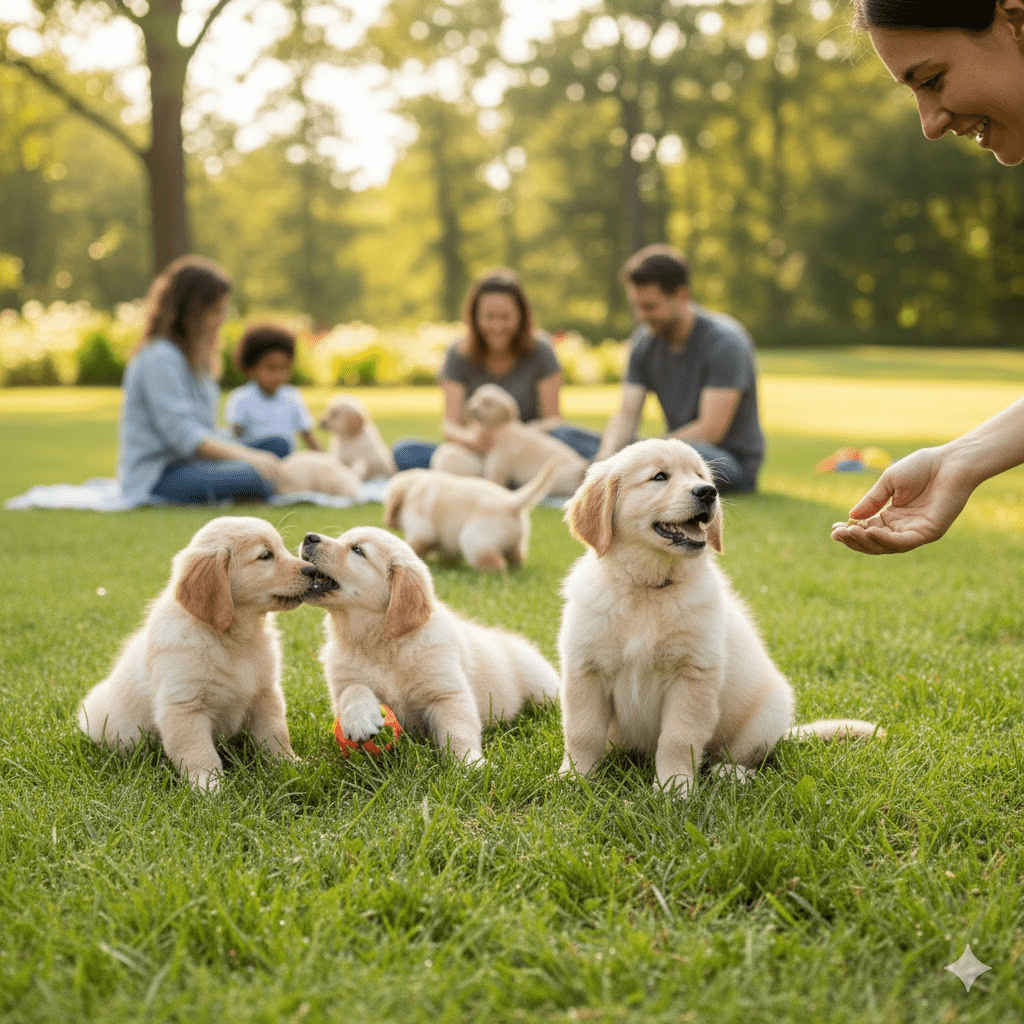
Nutrition: Fueling Healthy Growth
Proper nutrition is paramount for a Golden Retriever puppy’s rapid growth and development. High-quality puppy food specifically formulated for large breeds is essential, as it provides the right balance of protein, fats, vitamins, and minerals. Overfeeding can lead to rapid growth, which can put stress on developing joints, a concern for a breed prone to hip and elbow dysplasia. Conversely, underfeeding can hinder their growth and overall health. Consulting with a veterinarian to establish a feeding schedule and appropriate portion sizes based on the puppy’s age, weight, and activity level is highly recommended. Fresh water should always be available, and treats should be given in moderation as part of a balanced diet.
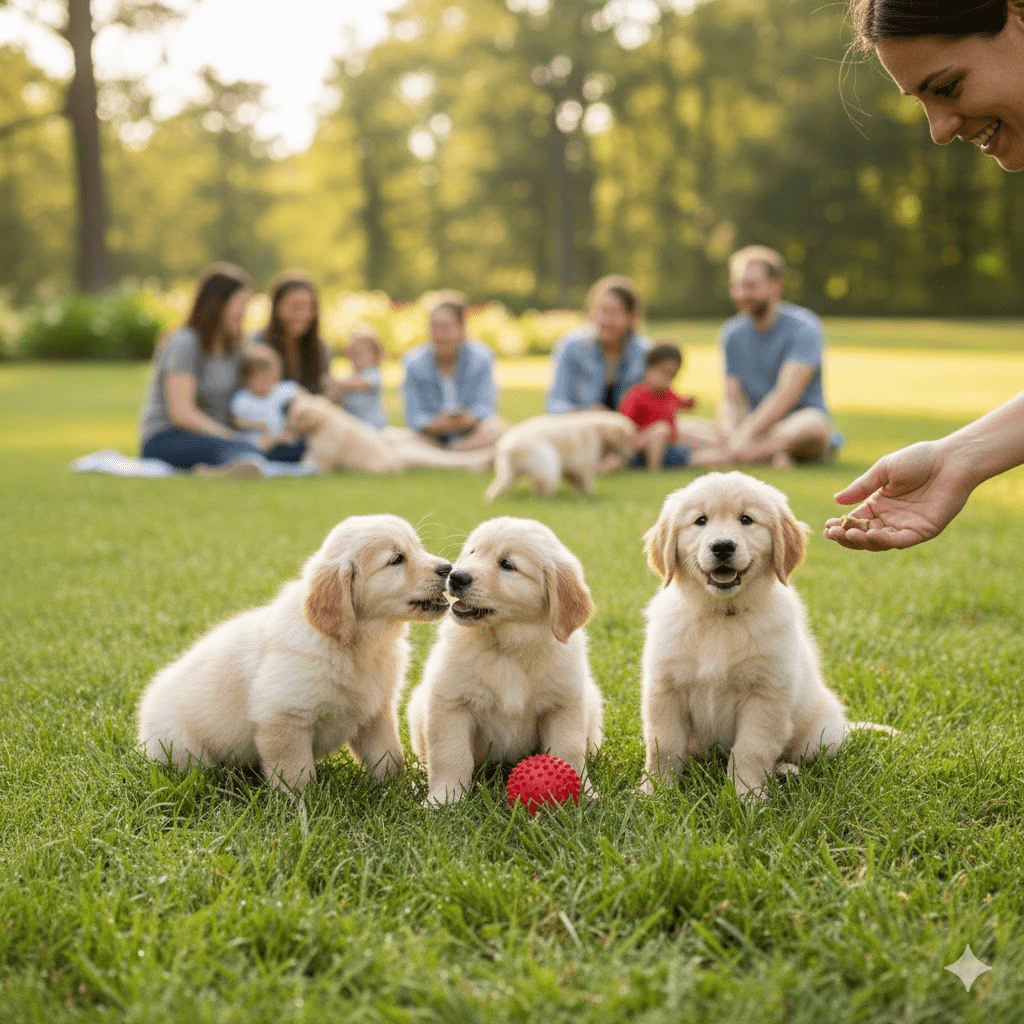
Training and Socialization: Building a Good Citizen
Golden Retrievers are highly intelligent and eager to please, making them excellent candidates for training. Early positive reinforcement training is crucial for teaching basic commands like sit, stay, come, and leash manners. Puppy classes offer a fantastic opportunity for both training and socialization, allowing puppies to interact safely with other dogs and people in a controlled environment. Consistent, patient, and reward-based training methods are most effective. Socialization extends beyond formal classes; it involves exposing the puppy to various environments, people, and experiences in a positive manner. This helps prevent fear or aggression and fosters a well-rounded, confident dog that can navigate different situations with ease.
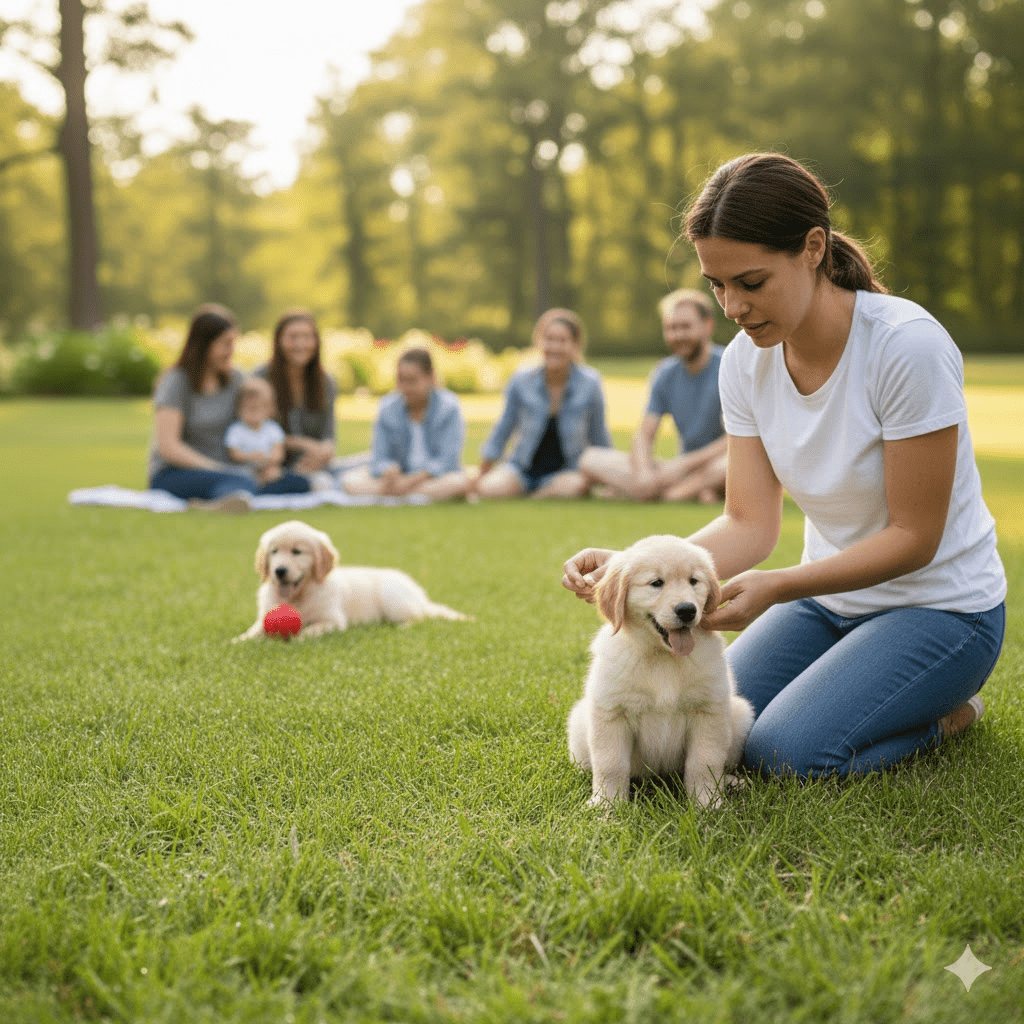
Exercise Requirements: Playtime and Exploration
Golden Retriever puppies are energetic and require regular exercise to burn off steam and develop strong muscles and bones. However, it’s important to balance their need for activity with the vulnerability of their growing bodies. Strenuous or high-impact activities should be avoided until their growth plates have closed, typically around 12-18 months of age, to prevent joint damage. Short, frequent play sessions, gentle walks, and supervised playtime in a secure yard are ideal. Engaging them with mentally stimulating toys and games can also help satisfy their need for activity and prevent boredom-related destructive behaviors. As they mature, their exercise needs will increase, often enjoying activities like swimming, fetch, and long walks.
